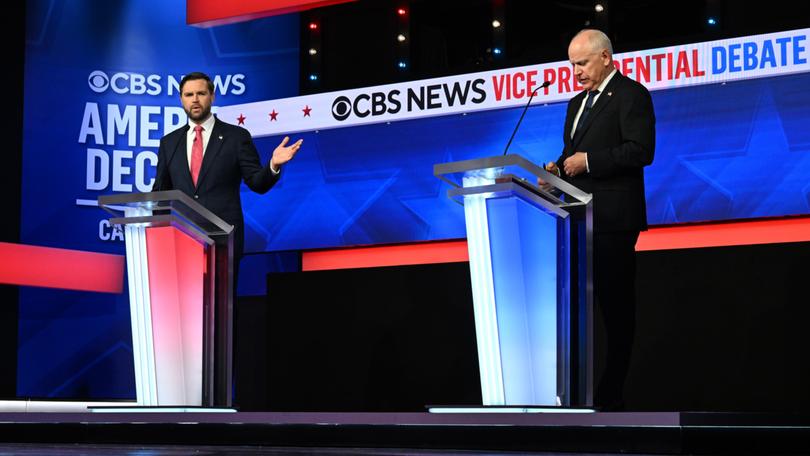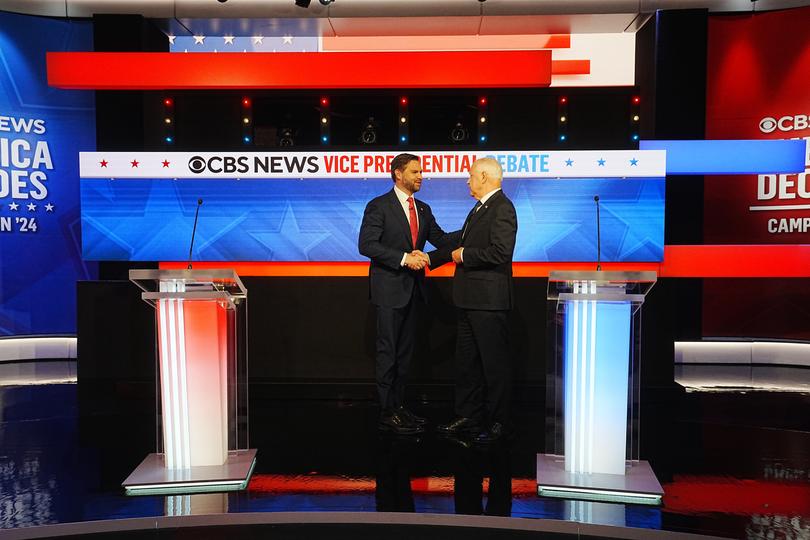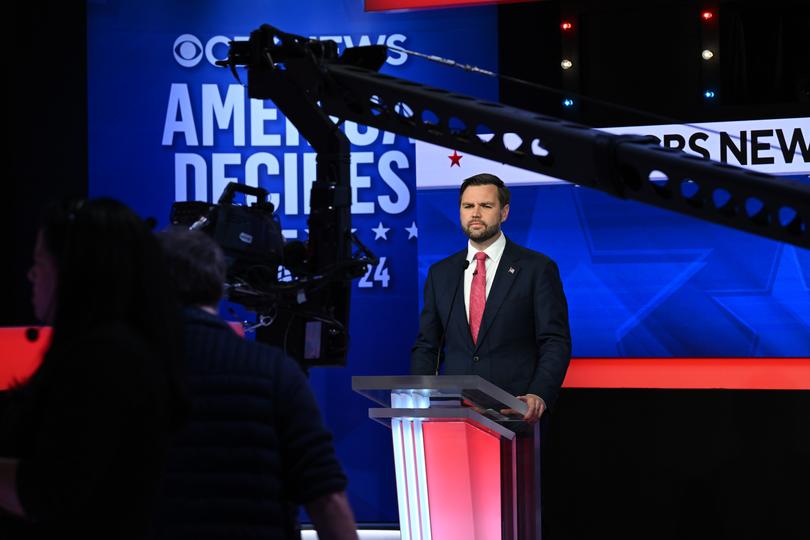Vice presidential debate: Policy-heavy dust-up between JD Vance and Tim Walz ends with democracy clash

Sen. JD Vance of Ohio and Gov. Tim Walz of Minnesota clashed on Tuesday in a vice-presidential debate in which Vance’s well-honed, television-friendly style came up against an aw-shucks approach from Walz that was at times nervous and halting.
But Walz found his footing late, when the debate turned to the question of former President Donald Trump’s refusal to accept the results of the 2020 election. When he directly asked Vance if Trump lost in 2020, the Republican said he was “focused on the future” — with Walz calling it a “damning non-answer.” It was perhaps the sharpest exchange of the night.
The undercard encounter was focused on policy, with the two men juggling detailed questions on foreign policy, climate change and immigration during the first half-hour.
Sign up to The Nightly's newsletters.
Get the first look at the digital newspaper, curated daily stories and breaking headlines delivered to your inbox.
By continuing you agree to our Terms and Privacy Policy.Vance, the Republican, and Walz, the Democrat, kept disagreements civil and almost entirely avoided personal attacks as they answered questions about news stories of the day, including Iran’s attack on Israel, and Walz’s false claim that he had been in Hong Kong during China’s deadly crackdown on the Tiananmen protests in 1989.
“I’m a knucklehead at times,” Walz said in a meandering response that provided little clarity about his misleading comments.
Vance had his work cut out for him, too, during the 107-minute debate broadcast from New York.
Time and again, he tried to rewrite Trump’s four years in office — which ended with a deadly pandemic and economic recession — in ways that bordered on brazen.
He described Trump’s anti-abortion position as a desire “to make it easier for moms to have babies.”
And on Trump’s repeated failures to repeal the Affordable Care Act, which he had promised to do during his 2016 campaign, Vance praised the former president for leaving health-care options in place for Americans.
Both Walz and Vance also avoided giving a straight answer when asked whether they would support Israel if it launched a preemptive military strike against Iran.

While neither candidate seemed to land the kind of viral knockout blow that can make a debate memorable, they both generally accomplished the golden measure of a vice presidential debate: Do no harm to your running mate.
Vance stared straight at the camera and delivered the message that Trump so often failed to hit in his presidential debate with Vice President Kamala Harris last month: Democrats have been in charge for four years, and things have not gotten better.
“Honestly, Tim, I think you’ve got a tough job here because you’ve got to play Whac-a-Mole,” said Vance, who makes frequent television appearances and often spars with reporters in question-and-answer session after his rallies. “You’ve got to pretend that Donald Trump didn’t deliver lower inflation, which of course he did, and then you’ve simultaneously got to defend Kamala Harris’ atrocious economic record, which has made gas, groceries and housing unaffordable for American citizens.”
For his part, Walz did his best to imitate the approach that Harris used in her debate with Trump, taking most questions and turning them into attacks on Trump’s character and performance in the White House. But he sometimes stumbled over his words and seemed rusty on the debate stage, after the Harris campaign chose to largely keep him away from reporters on the campaign trail.
When he was not talking, the two-term Minnesota governor could often be seen staring at Vance or looking down as he scribbled notes. His eyes were sometimes wide, his mouth twisted in an almost pained grimace, although he grew more comfortable as the night went on — and the television audience most likely shrank.
The moderators made good on their threat to mute the mics, after Vance tried to prolong a discussion on immigration. Vance talked over the two journalists, who were trying to move on, as he insisted on explaining the legal nuances of immigrants who hold temporary protected status in the United States. “Thank you, Senator, for describing the process,” Brennan said rather archly, adding: “Gentlemen, the audience can’t hear you because your mics are cut.”
Walz showed why Democrats believe abortion is their best issue, speaking at length about women in Texas, Kentucky and Georgia who have been put in excruciating positions as they navigated the restrictive abortion laws in those states. “This is about health care,” he said. Vance, who is extremely conservative on the issue, said he wanted policies that “make it easier for moms to afford to have babies.”

Vance notably dodged a question about whether a second Trump administration would deport immigrants without legal status who have children who are U.S. citizens, separating the families. As president, Trump, who has promised “mass deportations” in a second term, separated parents who had illegally crossed the border from their children, generating widespread condemnation.
Despite a few pointed back-and-forths, the debate was largely civil and focused on policy, especially compared to the clash between Trump and Harris. Both candidates made clear efforts to seem likable, with Vance appearing far more personable than the right-wing attack dog pose he often adopts on Fox News or conservative podcasts. And Walz, popular with Democrats for his Midwestern dad vibes, seemed most comfortable when talking about Minnesota farmers.
This article originally appeared in The New York Times.
© 2024 The New York Times Company
Originally published on The New York Times
